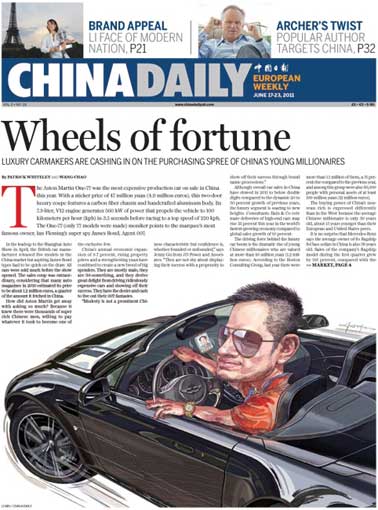Op-Ed Contributors
How current account surplus will evolve
Updated: 2011-06-15 07:53
By Louis Kuijs (China Daily)
China's external terms of trade have moved around a lot in recent years, because of swings in raw commodity prices. But on average, the terms of trade dropped only 4 percent between 2007 and 2010, which had a modest impact on the current account.
With export and import volumes both expected to grow at lower double digit rates and the terms of trade declining somewhat further, the current account surplus for 2011 as a whole is likely to fall further, to 3.5 to 4 percent of GDP.
The reduction in the current account surplus has of course been influenced by the global financial crisis. It depressed global demand and led China's government to implement a large and effective stimulus which boosted domestic demand.
Looking ahead, exports should continue to increase strongly and gain global market share. Imports, too, should continue to grow rapidly on the back of continued solid growth of China's domestic economy. But it is not clear how these two factors would on balance work out with regard to the current account surplus.
If China's domestic demand growth remains much stronger than elsewhere and significant rebalancing takes place toward a larger role for services and consumption, the external surplus may remain contained. Such progress with rebalancing, however, requires substantial policy adjustment and reform in a range of areas, including pricing of inputs into industry, public finances, policies for private and service sector companies, and the exchange rate. In the absence of such policy adjustment, exports are likely to start outstripping imports again, as they did before 2008, especially if the global economy - and thus demand for China's exports - does well.
The policy focus is crucial but hard to predict. Recent years have not seen a steady sequence of rebalancing-oriented reform. The 12th Five Year Plan (2011-2015) has rebalancing as a key objective. But the other major objective is industrial upgrading and moving up the value chain.
The plan suggests the government should lead this effort, even though in most market economies the government's role would largely be to provide an enabling framework with most of the upgrading left to the corporate sector. In fact, the industrial upgrading is already happening.
If on top of that the policy focus in the coming years is going to be more on industrial upgrading than on rebalancing, on balance we will see greater emphasis on industry and investment rather than services and consumption. This would drive up the current account surplus again over time.
On the other hand, given the robust outlook for domestic demand, a policy focus on rebalancing the current account surplus should remain contained. Thus, the relative emphasis on these two policy objectives in the coming years will be a key determinant of the current account trend.
The author is a senior economist at World Bank Office in Beijing.
(China Daily 06/15/2011 page9)
E-paper

Pret-a-design
China is taking bigger strides to become a force in fashion.
Lasting Spirit
Running with the Beijingers
A twist in the tale
Specials

Mom’s the word
Italian expat struggles with learning English and experiences the joys of motherhood again.

Lenovo's challenge
Computer maker takes on iconic brand apple with range of stylish, popular products

Big win
After winning her first major title, Chinese tennis star could be marketing ace for foreign brands
